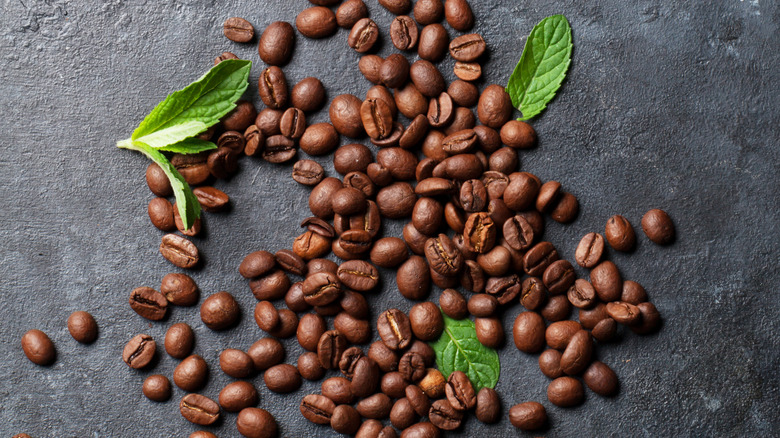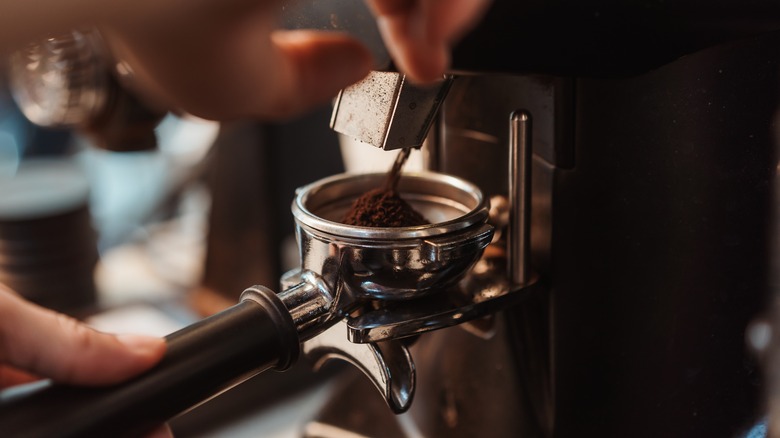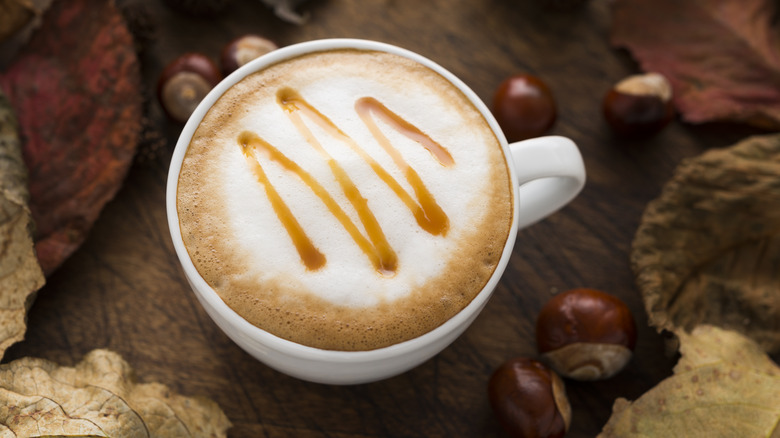Why Flavored Coffee Can Be A Red Flag For True Aficionados
Everyone has different preferences when it comes to coffee, especially java connoisseurs with passionate opinions on their favorite drink. However, one thing most coffee lovers can agree on is that pre-flavored beans aren't worth your time or money. A peppermint-infused or pumpkin-spiced bag of beans may seem tempting, but manufacturers often use artificially-flavored oils to mask the taste of low-grade or even stale coffee beans. This could be one of the reasons why your home-brewed coffee tastes sour.
Conversely, beans of higher quality don't need the help of an oily, flavored coating to create a delicious cup. And pushing flavorings onto good-quality coffee can be an even bigger red flag than adding them to the cheap stuff. Rich, chocolatey Yemeni-style coffee or the uniquely lemony twist found in some Guatemalan beans would be completely overwhelmed by a blast of cinnamon or caramel. To coffee connoisseurs, adding an artificial perfume to a high-quality cuppa is as ridiculous as going to a wine tasting, adding boxed fruit punch to a glass of fine vino, and then trying to appreciate the original flavor notes.
Flavored beans can also damage your coffee grinder
Not only do artificial flavors disguise your coffee's true flavor (or dupe you into buying the stale stuff), but they can also wreak havoc on your coffee grinder. As coffee beans age, they become less porous, meaning they don't soak up flavored oils as well. Manufacturers that use stale beans try to compensate by adding more oils. The excess grease can result in your grinder producing not a fine powder, but an unappetizing paste that is harder for water to penetrate. This creates weak, strange-tasting coffee, and even worse, it damages the grinder over time.
The oils used to coat flavored coffee beans can leave behind a sticky residue on your machine, impairing the function of your grinder and ruining the taste of subsequent coffee grinds. That oily, cinnamon-heavy coffee might wind up being passably tasty, but it could taint dozens of future cups by leaving its flavor behind, whether you want to taste it or not. It's a surefire path to less-than-perfect espresso, to say the least. You could clean your grinder thoroughly to get rid of a bad aftertaste, but who has the time to do that every day instead of every other week, like most experts recommend? We certainly don't.
How to get your flavored coffee fix without the downsides
Although coffee connoisseurs might say "nay," you don't have to ditch flavored coffee entirely. Instead, up your flavored coffee game with a few tricks and precautions. If you have a brand of flavored beans that you really enjoy, avoid damaging your coffee grinder by grinding your coffee with a mortar and pestle. This tool is far easier to clean between uses than a big coffee grinder. You can also use a blender or food processor, but keep in mind that these appliances may get hot enough to burn the beans.
To avoid these complications altogether, you can buy regular coffee beans and add your own flavorings after grinding and brewing. This way, you can use your coffee grinder without worrying about sticky residue or damage, and you can customize your coffee as much as you'd like. Pick from different sweeteners, syrups, spices, and toppings to create a personalized taste sensation that you won't be able to find in cheap bags at the grocery store.
By starting with plain beans as opposed to flavored ones, all your coffee drinks will have a more high-quality base, creating an all-around better experience. We promise it will be worth the extra effort, whether you enjoy your cup of joe plain or jazzed up with some sweetness and flavorful flair.



